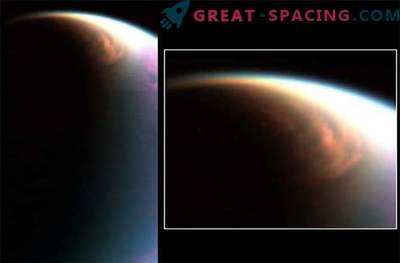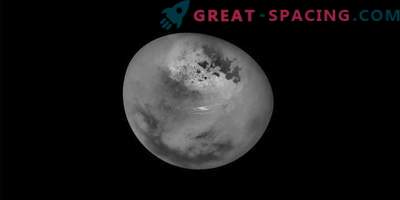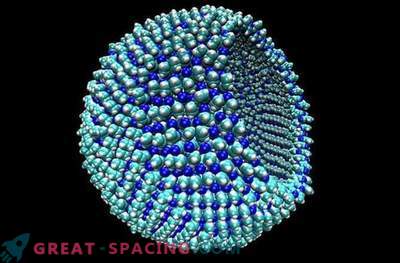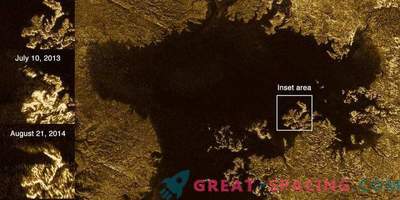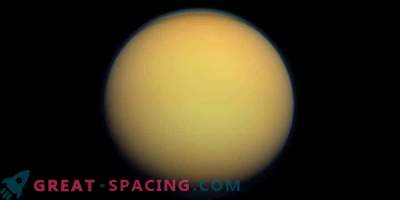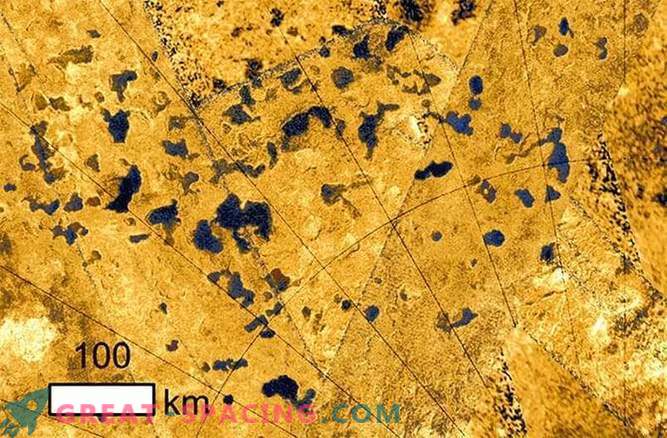
A close-up of the surface of Titan, in which both empty and liquid-filled depressions are visible (painted blue). The radar image was obtained using the automatic spacecraft Cassini-Huygens.
Saturn's satellite Titan is very different from our planet. Its surface is covered with hydrocarbon compounds, and there are methane rains. However, astronomers are looking more closely at this little hazy world to find clues about the formation of our planet. And, it seems, the more we study the surface of Titan, the more we find features and processes similar in terrestrial geology and atmospheric phenomena.
As soon as the NASA / ESA Cassini-Huygens missions (Cassini-Huygens) were able to break through the thick, foggy atmosphere of Saturn’s satellite, scientists were surprised by the huge reservoirs on the surface of Titan. Titan's atmosphere is too cold to contain water in a liquid state, but liquid forms of methane and ethane are present on the planet. In the atmosphere of Titan there is even a cycle of methane, similar to the terrestrial cycle of water. In it, rains from liquid methane, and not water in liquid form, fall to the surface, forming rivers and bodies of water similar to lakes and even large “seas”.
However, some of these atmospheric features for a long time did not respond to the explanation. For example, lakes of liquid methane and ethane, which are not fed by rivers or streams. These are small lakes with rounded edges and steep banks, of which there are many on the flat surface of the planet. Some of these lakes are filled with liquid, others are empty. In a recent study published in the Journal of Geophysical Research, scientists scrutinized these lakes, and found that they form like earthly karst relief forms. In other words, these lakes on Titan are karst craters.
On Earth, karst craters form when soluble rocks, such as lime or gypsum, are eroded by rainwater and groundwater that seeps through the rock. Over time, underground karst voids are formed, leading to the failure of the surface, forming a karst funnel. Often, such funnels are filled with water, forming a lake.
Since it is extremely cold on Titan, and the seasons there last much longer, the formation of such craters takes much longer. However, new scientific models show that this is exactly what is happening on the satellite.
“We compared the rate of erosion of organic substances in Titan's liquid hydrocarbons with the rate of erosion of carbonate and evaporite minerals in water on Earth,” says Thomas Cornet from the European Space Agency, who heads this research.
“We found that the dissolution process on Titan is 30 times longer due to the longer duration of the year and because it rains on Titan only in the summer period. Nevertheless, we are convinced that erosion is the main element that forms the landscape of Titan, and it can be the cause of the formation of lakes. ” This means that it may take up to 50 million years to form a 100-meter depression in rainy subpolar latitudes of Titan, according to research by a group of scientists Cornet. It is curious that in other, lower latitudes, where rains occur much less frequently, this process can take up to 375 million years. Therefore, closer to the equator on Titan, there are practically no lakes.
“Comparing the features of the surfaces of Titan and the Earth, and applying a few simple calculations, we find similar landscape formation processes that can occur under very different climatic conditions and chemical modes,” said Nicholas Altobelli, scientist at the ESA project Cassini-Huygens. “This is a huge research project that compares our planet and the dynamically developing world in the solar system, more than a billion kilometers away.”


